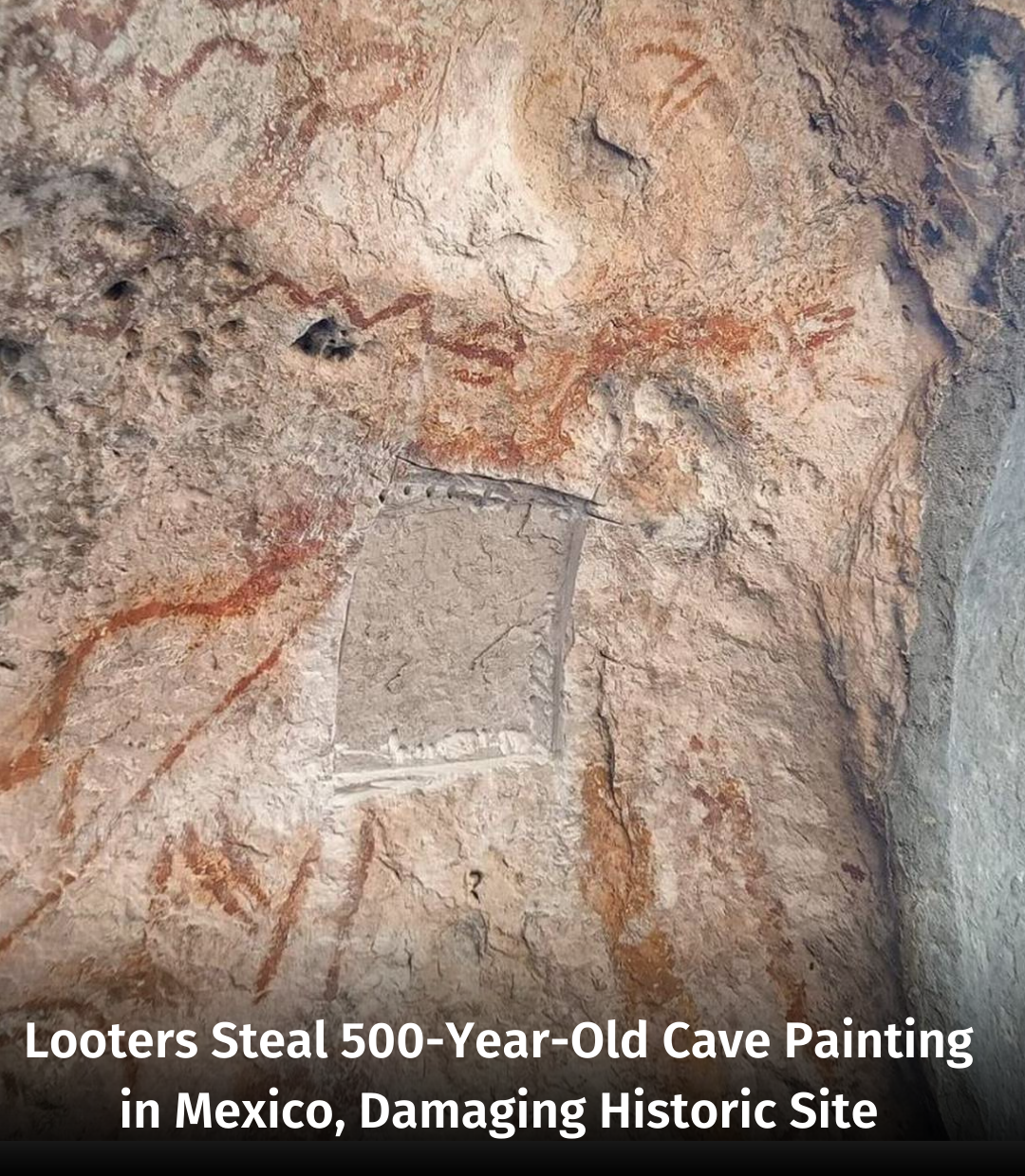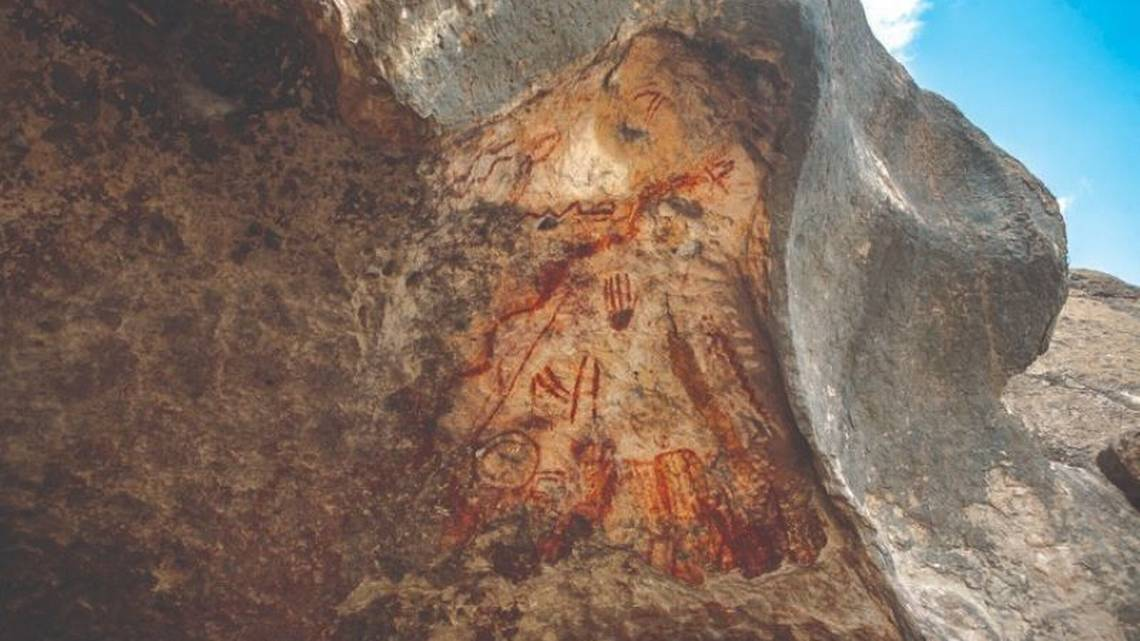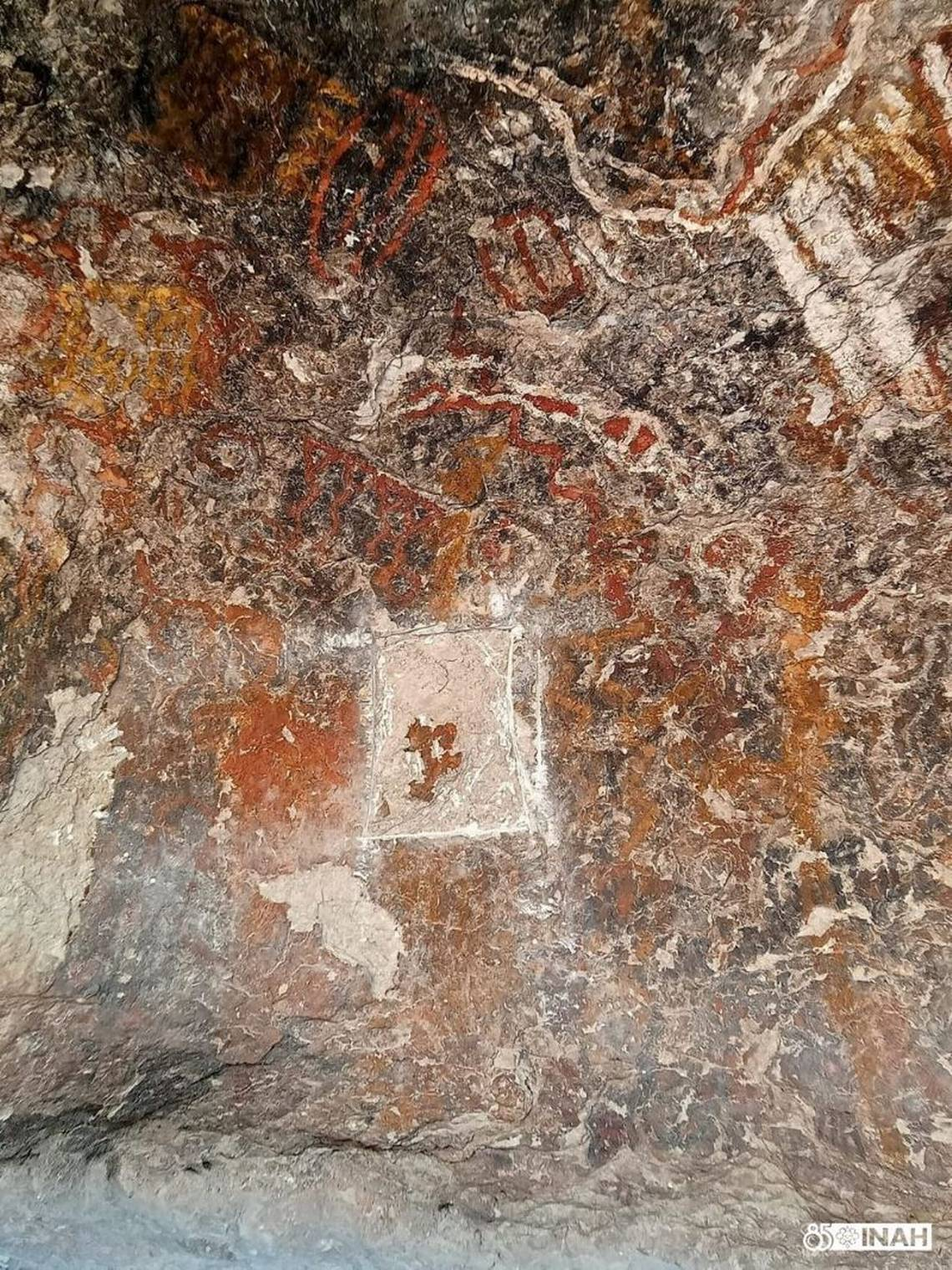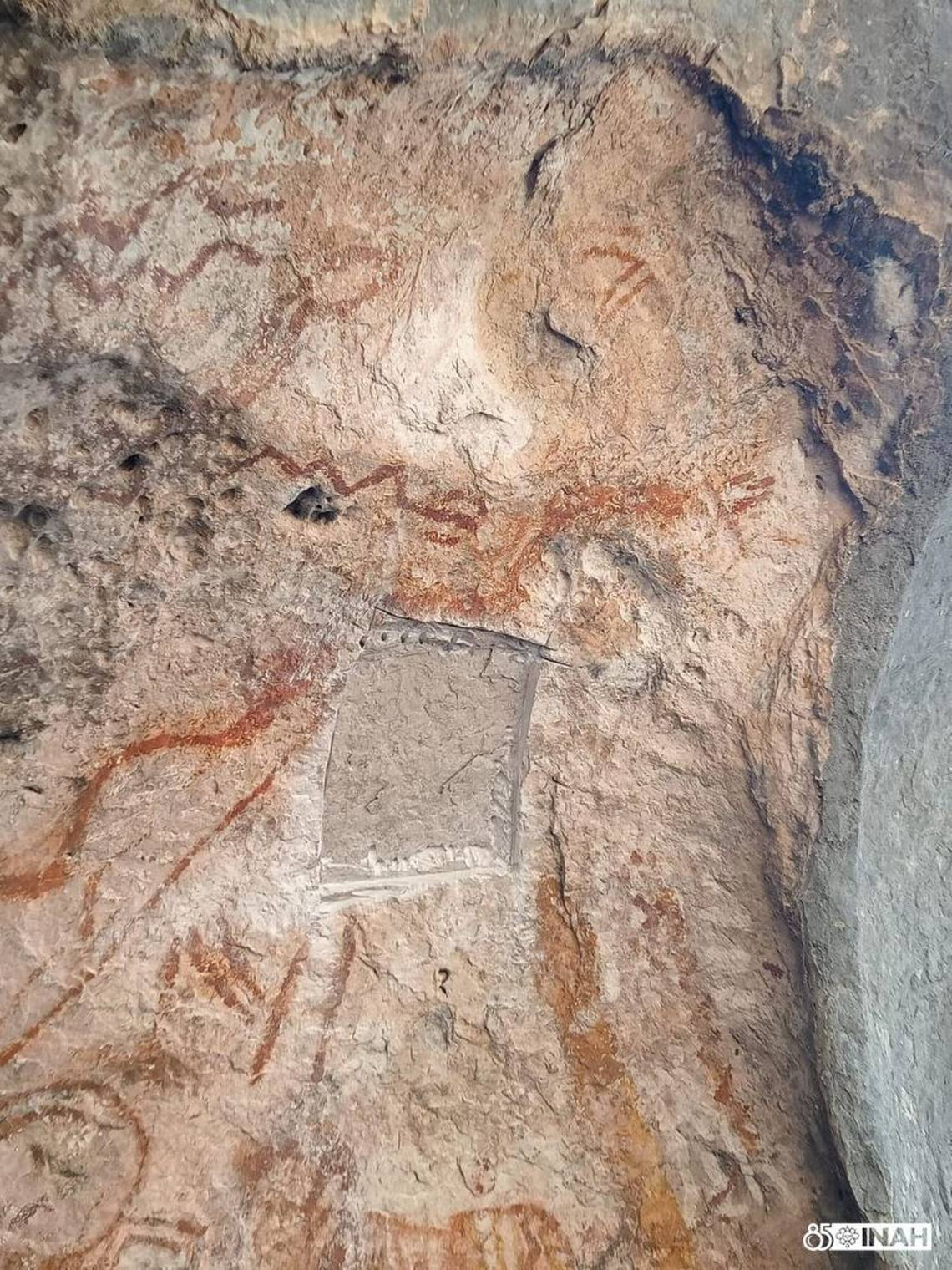A historic cave painting, believed to be at least 500 years old, has been stolen from La Cueva Pinta in northern Mexico, leaving archaeologists and officials outraged. The looters used an electric saw to remove the artwork, also causing damage to two other paintings at the site, according to Mexico's National Institute of Anthropology and History (INAH).
Discovery of the Damage
The Coahuila branch of INAH received a citizen complaint regarding damage at La Cueva Pinta, prompting an investigation by archaeologist Yuri de la Rosa Gutiérrez. Upon inspection, a section of the cave painting was found missing, while two other artworks had visible damage.
One of the damaged sections of La Cueva Pinta. Photo from Mexico’s National Institute of Anthropology and History
Photographs from the site reveal blank rectangular spaces surrounded by vibrant red and orange designs. Fragments of painted rock were discovered on the ground nearby, evidence of the looters' use of an electric saw.
The stolen painting prominently featured a human hand, a striking image that held historical and cultural significance.
The spot where a painting was cut out of La Cueva Pinta. Photo from Mexico’s National Institute of Anthropology and History
Official Condemnation
The Mexican Ministry of Culture and INAH issued a joint statement on January 8 condemning the destruction. They described the incident as an irreparable loss to the country’s cultural heritage and confirmed that a formal complaint had been filed with the justice department. However, there have been no leads or identified suspects in the case.
Mexico's archaeological sites, including La Cueva Pinta, are protected by federal law, making this theft a serious criminal offense.
Significance of La Cueva Pinta
Located near Cuatro Ciénegas in Coahuila, a northern state bordering Texas, La Cueva Pinta is adorned with over 150 paintings that span thousands of years. Some of the artworks date back as far as 5,000 years, making the site an invaluable record of ancient cultures in the region.
The theft and damage not only rob Mexico of a piece of its history but also highlight the ongoing challenges in protecting archaeological treasures from vandalism and theft.
A Call for Preservation
This act of looting serves as a stark reminder of the fragility of historical sites and the importance of safeguarding them for future generations. The Mexican Ministry of Culture and INAH continue to advocate for the protection of these irreplaceable landmarks, urging communities to assist in preserving the nation’s rich cultural legacy.










